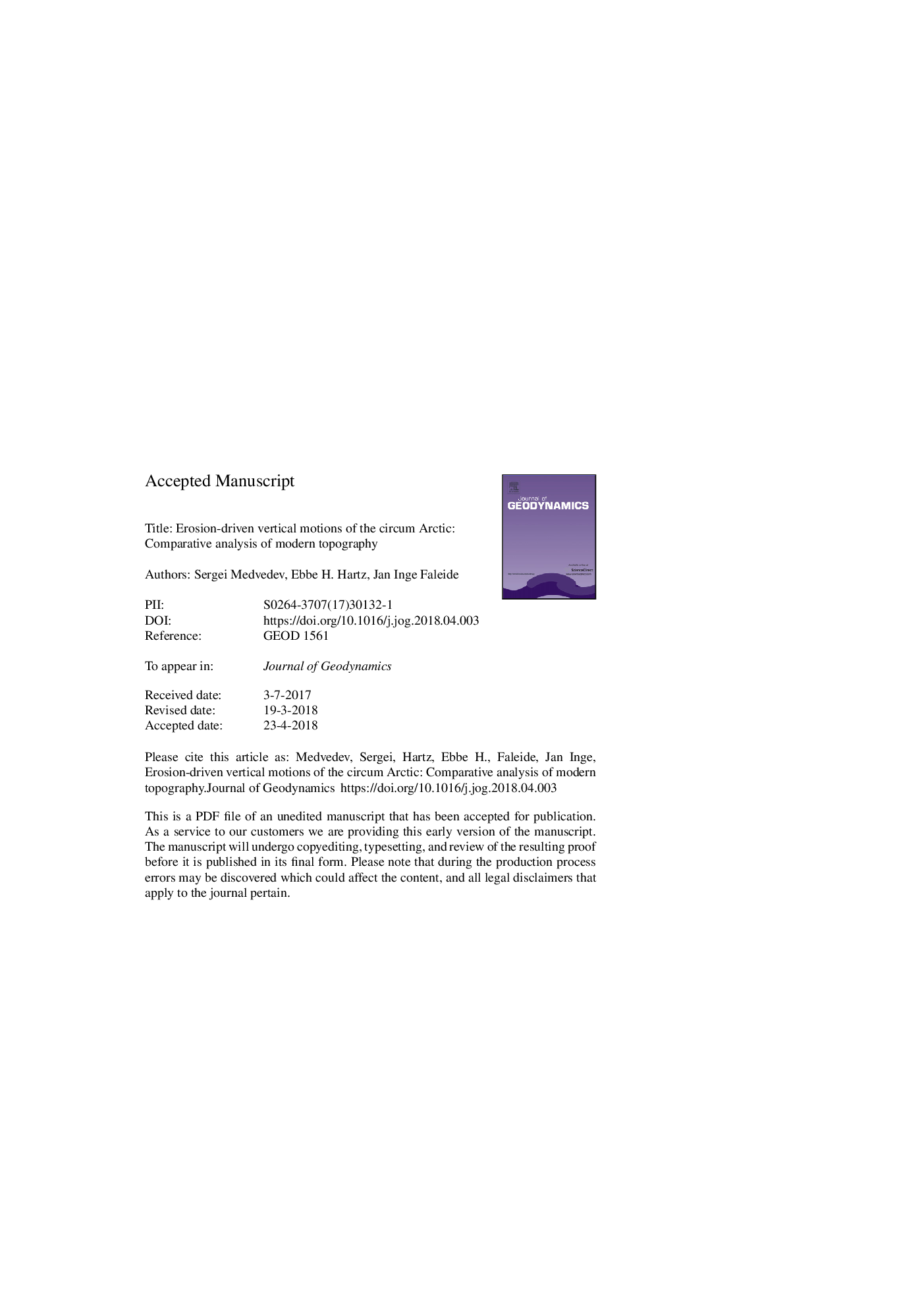| Article ID | Journal | Published Year | Pages | File Type |
|---|---|---|---|---|
| 8908379 | Journal of Geodynamics | 2018 | 46 Pages |
Abstract
Deep and complex geodynamic processes, including the effects of plumes, heat, plate tectonics, and local tectonics control the Earth's surface. In the Arctic these deep processes are masked by extensive glaciations and associated or roughly synchronous erosion. In this study we aim to reveal these hidden geodynamic processes by modeling erosion backward in time by numerically restoring eroded material and calculating the flexural isostatic response repeatedly iteratively until eroded features are filled. This method estimates erosion recorded in the modern topography and models the influence of that erosion. Although the obvious topographic response to erosion is a lowering of the elevation, our coupled erosion-isostatic response method results in dramatic vertical motions leading to km-scale uplift in fjord carved areas of Scandinavia, Greenland, and Canadian Arctic Archipelago and supporting ancient orogenic belts of northern Siberia and northern Alaska to stay at high elevation. Sensitivity testing confirms the utility of our method over a range of effective elastic plate thicknesses as well as for laterally varying elastic thickness. Comparison of modelling results with observed gravity anomalies shows that our method is valid for both glacial and fluvial affected landscapes but more importantly links surface and deep Earth dynamics. Combined analysis of the gravity anomalies and model results also explains erosion as one of the main mechanisms responsible for gravity signal for tectonically inactive regions and illustrates the interaction of short wavelength erosional processes and large scale, regional processes like active orogenesis and dynamic topography.
Related Topics
Physical Sciences and Engineering
Earth and Planetary Sciences
Earth-Surface Processes
Authors
Sergei Medvedev, Ebbe H. Hartz, Jan Inge Faleide,
